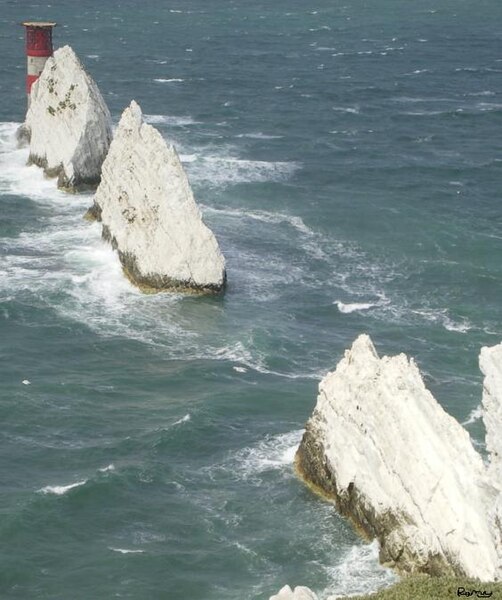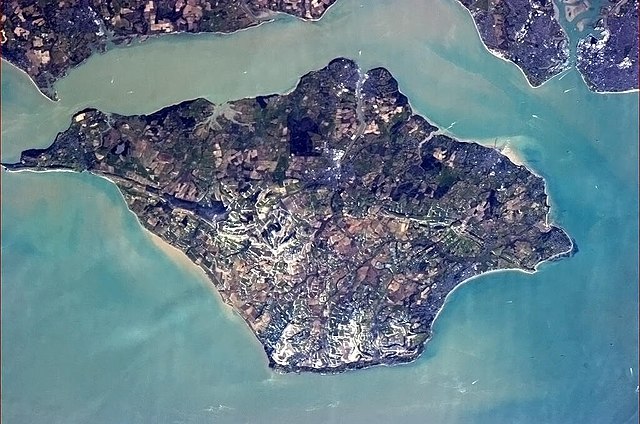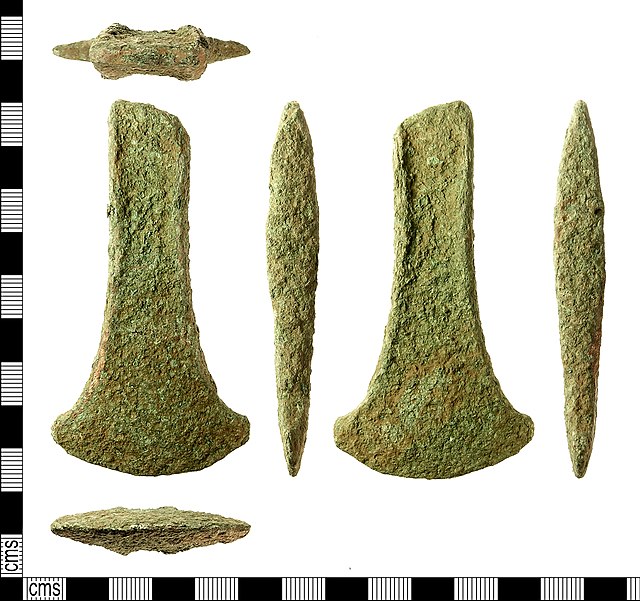The Needles are a row of three stacks of chalk that rise about 30 metres (98 ft) out of the sea off the western extremity of the Isle of Wight in the English Channel, United Kingdom, close to Alum Bay and Scratchell's Bay, and part of Totland, the westernmost civil parish of the Isle of Wight. The Needles Lighthouse stands at the outer, western end of the formation. Built in 1859, it has been automated since 1994. The waters and adjoining seabed form part of the Needles Marine Conservation Zone and the Needles along with the shore and heath above are part of the Headon Warren and West High Down Site of Special Scientific Interest.
The Needles – View from the viewpoint near the former experimental rocket testing station
The Needles from the cliffs inshore at The Needles Battery showing the Needles Lighthouse
Close-up of the needles
The Needles - From the Beautiful Britain series, The Isle of Wight, by G. E. Mitton
The Isle of Wight is an island, English county and unitary authority in the English Channel, 2 to 5 miles off the coast of Hampshire, across the Solent. It is the largest and second-most populous island in England. Referred to as "The Island" by residents, the Isle of Wight has resorts that have been popular holiday destinations since Victorian times. It is known for its mild climate, coastal scenery, and verdant landscape of fields, downland, and chines. The island is historically part of Hampshire. The island is designated a UNESCO Biosphere Reserve.
An image of the Isle of Wight from the ISS
A flint hand axe from the Paleolithic, c. 500,000 BP, found on the island in 2010.
A Neolithic arrowhead from c. 2500 – c. 2100 BCE, found on the island in 2011
An early Bronze Age axehead from c. 2000 – c. 1700 BCE, found on the island in 2011








